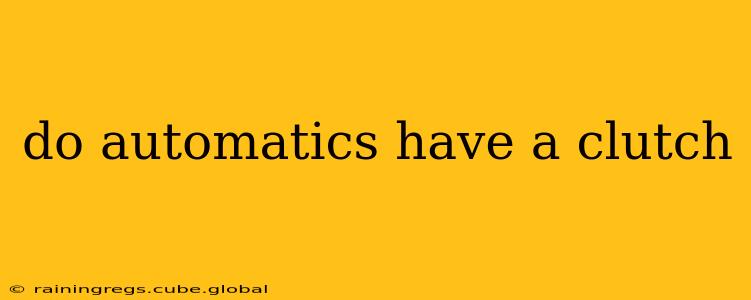Do Automatic Cars Have a Clutch?
No, automatic cars do not have a clutch pedal. This is the fundamental difference between automatic and manual transmission vehicles. The absence of a clutch pedal is a key feature that makes automatics easier to drive, particularly for beginners. But let's delve deeper into why this is the case and explore some related questions.
What is a Clutch and What Does it Do?
Before understanding why automatics don't need a clutch, it's crucial to understand the clutch's function in a manual transmission car. The clutch is a mechanical device that disconnects the engine from the transmission. When you depress the clutch pedal in a manual car, you're disconnecting the engine's power from the wheels, allowing you to change gears smoothly. Without this disconnection, shifting gears would be impossible and would severely damage the transmission. Releasing the clutch pedal smoothly re-engages the engine and transmission, allowing the car to move.
How Do Automatic Transmissions Work Without a Clutch?
Automatic transmissions use a sophisticated system of hydraulics or electronics (or a combination of both) to manage gear changes without driver intervention. Instead of a clutch pedal, these systems use torque converters (in many older automatics) or sophisticated electronic control units (in modern automatics) to smoothly transfer power from the engine to the transmission and subsequently to the wheels. The torque converter acts as a fluid coupling, allowing for a gradual transfer of power, eliminating the need for a clutch pedal. Modern automatics often employ dual-clutch or continuously variable transmissions (CVT) which further refine the gear-changing process.
Do Automatic Cars Have Anything Similar to a Clutch?
While automatic cars don't have a clutch pedal, the underlying principle of disconnecting and connecting the engine to the transmission is still present. However, this is managed internally within the transmission by the torque converter or other mechanisms. These internal components perform the same fundamental function as a clutch in a manual transmission, but without requiring any driver input.
What are the Advantages and Disadvantages of Automatic vs. Manual Transmissions?
Automatic transmissions offer ease of use and convenience, making driving less demanding, particularly in stop-and-go traffic. Manual transmissions, on the other hand, provide greater control and often better fuel efficiency (although this difference is diminishing with modern automatic technology). The choice between automatic and manual ultimately depends on personal preference, driving style, and the specific vehicle.
Are There Any Exceptions to the Rule?
While the vast majority of automatic cars do not have a clutch pedal, some specialized vehicles or older models might have different transmission systems. However, for the average consumer, the answer remains a clear no. Modern automatic transmissions have largely superseded the need for a clutch pedal in everyday vehicles.
In conclusion, the absence of a clutch pedal is a defining characteristic of automatic cars. The sophisticated internal mechanisms within the automatic transmission effectively replace the function of the clutch, providing a smooth and effortless driving experience.
